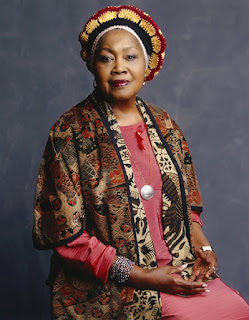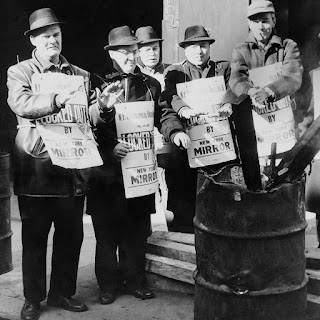New York, My Village, by Uwem Akpan
- Where I bought this book: The Book Loft, Columbus, Ohio
- Why I bought this book: It has a map
****
My indelable memory of the Biafran War is the Catholic Charities "relief campaign" that used pictures of starving African children with bloated stomachs to raise money.
That's it. I knew nothing about the reasons for the war, or even where in Africa Biafra was.
So I was hoping this book would help me learn just a little bit about the war, and just as important, what happened and what is happening now.
It kinda did. But it also taught me the war has a long background, involves colonization and other crimes committed on the African peoples, and pretty much boils down to why any war is fought -- hatred, discrimination, jealously, and control.
Briefly, and I hope I get this right: Biafra is a small province in the south of Nigeria. Northern Nigerian tribes, particularly the Hausa-Fulani, dominated. In 1967, representatives of the Igbo tribe in southern Nigeria, based in Biafra, claimed they controlled the south and proclaimed their independence.
It did not go well. There's a reason you don't hear of Biafra anymore. It's no longer a country, and hasn't been since 1970.
In this fictionalized account, Ekong Udousoro is a book editor, and he receives a fellowship to intern at a small publishing company in New York City. He is part of the Annang, who also lives in southern Nigeria, but have had little control to the dominant Igbo. Or as Ekong puts it, his group is a minority within a minoiry.
This book is an account of his months learning the book publishing industry, coupled with memories of the war -- which actually happened before he was born, but which has shaped his family, his village, and himself.
But it's also about his family relationships -- which are confusing; his troubles and joys adapting to living in Hell's Kitchen -- ugh! far too much information on bedbugs and his problems with them; his relationships with his landlord, the man he is subletting his apartment from; the racism he confronts on the job and in book publishing; his difficulties getting along with his new neighbors, and much, much more.
It's really too much. He covers too many issues, confusing us on many occassions, and spends far too much time on the damn bedbugs. (And even when you think he is done with that, they come back! I was ready to toss the book across the room at this point.)
Still, at its heart, the book's theme is about how we complicate our lives by dividing ourselves in too many groups -- by color, ethnicity, religion, jobs, community, and so much more. In short, perhaps we are all minorities of a minority.



























